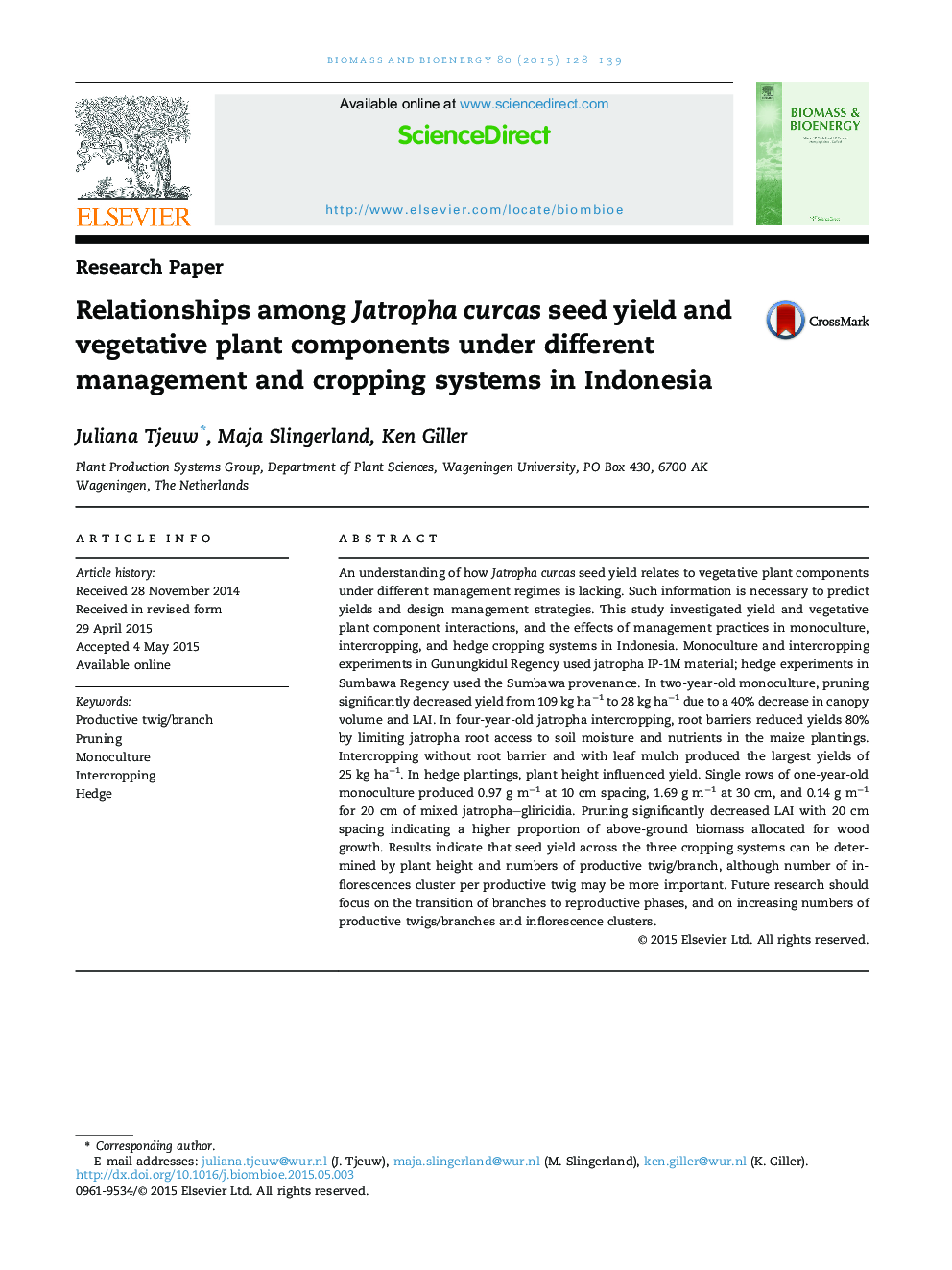| کد مقاله | کد نشریه | سال انتشار | مقاله انگلیسی | نسخه تمام متن |
|---|---|---|---|---|
| 7063820 | 1459813 | 2015 | 12 صفحه PDF | دانلود رایگان |
عنوان انگلیسی مقاله ISI
Relationships among Jatropha curcas seed yield and vegetative plant components under different management and cropping systems in Indonesia
دانلود مقاله + سفارش ترجمه
دانلود مقاله ISI انگلیسی
رایگان برای ایرانیان
موضوعات مرتبط
مهندسی و علوم پایه
مهندسی شیمی
تکنولوژی و شیمی فرآیندی
پیش نمایش صفحه اول مقاله

چکیده انگلیسی
An understanding of how Jatropha curcas seed yield relates to vegetative plant components under different management regimes is lacking. Such information is necessary to predict yields and design management strategies. This study investigated yield and vegetative plant component interactions, and the effects of management practices in monoculture, intercropping, and hedge cropping systems in Indonesia. Monoculture and intercropping experiments in Gunungkidul Regency used jatropha IP-1M material; hedge experiments in Sumbawa Regency used the Sumbawa provenance. In two-year-old monoculture, pruning significantly decreased yield from 109 kg haâ1 to 28 kg haâ1 due to a 40% decrease in canopy volume and LAI. In four-year-old jatropha intercropping, root barriers reduced yields 80% by limiting jatropha root access to soil moisture and nutrients in the maize plantings. Intercropping without root barrier and with leaf mulch produced the largest yields of 25 kg haâ1. In hedge plantings, plant height influenced yield. Single rows of one-year-old monoculture produced 0.97 g mâ1 at 10 cm spacing, 1.69 g mâ1 at 30 cm, and 0.14 g mâ1 for 20 cm of mixed jatropha-gliricidia. Pruning significantly decreased LAI with 20 cm spacing indicating a higher proportion of above-ground biomass allocated for wood growth. Results indicate that seed yield across the three cropping systems can be determined by plant height and numbers of productive twig/branch, although number of inflorescences cluster per productive twig may be more important. Future research should focus on the transition of branches to reproductive phases, and on increasing numbers of productive twigs/branches and inflorescence clusters.
ناشر
Database: Elsevier - ScienceDirect (ساینس دایرکت)
Journal: Biomass and Bioenergy - Volume 80, September 2015, Pages 128-139
Journal: Biomass and Bioenergy - Volume 80, September 2015, Pages 128-139
نویسندگان
Juliana Tjeuw, Maja Slingerland, Ken Giller,